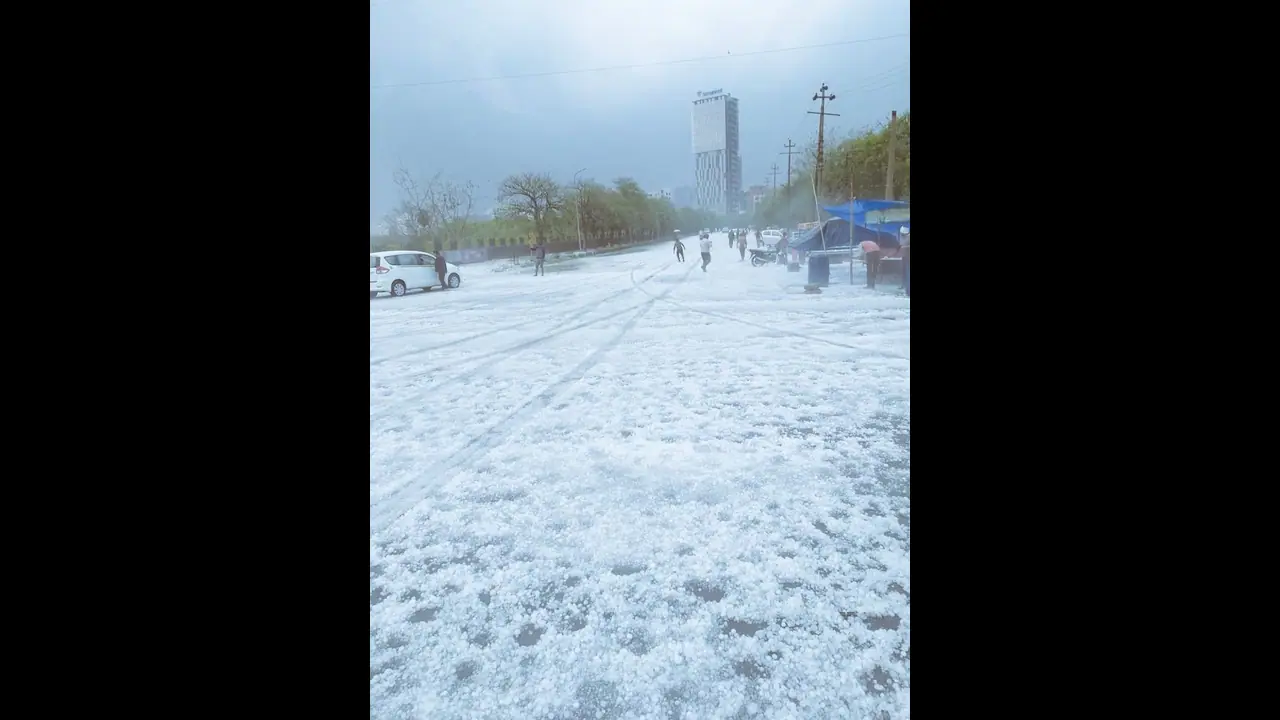On Thursday, the national capital region witnessed heavy rains and hailstorm accompanied by strong winds. The rare weather phenomenon brought the mercury down by four to five notches.
New Delhi: On Thursday, people in Delhi-NCR regions received a pleasant surprise: Hailstorm that covered roads white and gave the capital city a completely new look.
However, you are not the only person if you are wondering how did it hail when it is not that cold even?
To be precise, the minimum temperature yesterday was 15 degrees Celsius, six notches above the season's average.
Well, a hell storm has nothing to do with winter, unlike snowfall.
What is hailstorm?
By definition, hail is a form of solid precipitation in shapes of balls or irregular lumps of ice which are formed inside of clouds towering at great heights and later fall from the sky as pellets of ice.
Confused? Not cold but still ice is falling from the sky?
Hail is only formed in thunderstorms or Cumulonimbus clouds. It sometimes happens that droplets of water instead of falling on the ground as rain is carried higher up into the atmosphere by strong winds. When this happens more droplets accumulates and then freeze due to the cold temperature up there.
Now substantially heavy, the hailstones start falling. While passing through several layers of the cloud, these hailstones accumulate other water droplets and increase in size. Basically, we are talking about an anti-gravity rainfall.
We should note here that hailstorm is not a winter weather event. While hailstorm can occur year-round, it is more closely related to thunderstorm and summer weather can fuel more storm as there an abundance of heat in the atmosphere.
So, Delhiites calm down. Your city will not become colder.
What is snowfall?
Also, do not confuse snowfall with a hailstorm. Though both are ice, snow is formed when a droplet of water is captured on a dust particle and freezes due to cold weather. For snow to happen, the weather needs to be really really cold.

Different between fog, mist
Another set of weather phenomenon that people get confused about is mist and fog.
Fog is a visible aerosol (suspended solid particles and liquid droplets) made of tiny water droplets or ice crystals suspended in the air near the earth's surface. It is a low-lying cloud. Whether fog will get formed or not depends on the presence of nearby bodies of water, topography, and wind conditions.
Fog is formed when the difference between air temperature and the dew point is less than 2.5 °C.

Mist is nothing but water droplets dispersed and suspended in air. When warm, moist air undergoes a sudden colling, a mist is formed. It is a larger version of what is seen in kitchens when water at normal temperature is sprinkled or splashed on a hot vessel on the stove. A freezing mist is, however, similar to freezing fog, but the density of a mist is less. During a mist, the visibility is greater. When fog falls below 0°C, it is known as freezing fog.

In other words, both are formed by the suspension of water droplets in the atmosphere, fog is more severe.
So next times when you struggle to see on the Delhi-Noida Direct (DND) flyway, do not blame mist for it.
